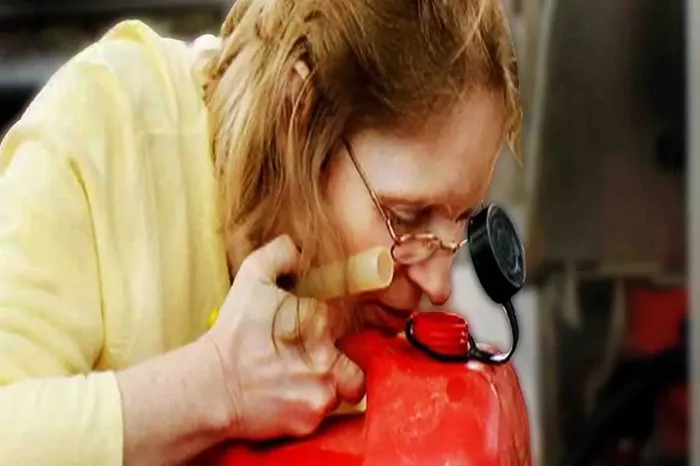In recent years, consumers and experts alike have noticed a significant change in the odor of gasoline. What was once a distinctive and pungent smell has gradually faded into something much less pronounced. This shift has sparked curiosity and concern among drivers, industry professionals, and environmental advocates alike. In this article, we delve into the top 5 reasons behind why gasoline no longer smells as it once did, exploring the technological, environmental, and regulatory factors at play.
1. Advancements in Fuel Composition
One of the primary reasons behind the diminishing smell of gasoline lies in the advancements made in fuel composition. Traditional gasoline, which relied heavily on aromatic hydrocarbons such as benzene, toluene, and xylene (BTX), possessed strong odors that were easily detectable even at low concentrations. However, modern gasoline formulations have evolved significantly to meet stricter environmental standards and enhance engine performance.
Today, gasoline blends often include a higher proportion of aliphatic hydrocarbons and oxygenates like ethanol. These components have milder odors compared to their aromatic counterparts. Ethanol, for example, is commonly added to gasoline as an oxygenate to improve combustion efficiency and reduce harmful emissions. This shift away from aromatic compounds has contributed significantly to the reduced olfactory impact of gasoline.
2. Improved Refining Processes
Advancements in refining technology have also played a crucial role in altering the olfactory profile of gasoline. Modern refining techniques have become more sophisticated, enabling the production of cleaner and purer gasoline. Processes such as catalytic reforming and hydrotreating have become standard in the refining industry, aiming not only to enhance fuel quality but also to reduce the content of sulfur, nitrogen, and other impurities that contribute to unpleasant odors.
Hydrotreating, for instance, involves the use of hydrogen to remove sulfur and nitrogen compounds from crude oil fractions before gasoline production. This results in a cleaner end product with significantly reduced sulfur content, thereby mitigating the characteristic “rotten egg” smell associated with sulfur-containing compounds. As refineries adopt these cleaner technologies, the overall odor intensity of gasoline has noticeably diminished.
3. Environmental Regulations
The tightening of environmental regulations represents another pivotal factor in the transformation of gasoline odor. Regulatory agencies worldwide have imposed stringent limits on the emissions of volatile organic compounds (VOCs) from gasoline and other petroleum products. VOCs not only contribute to air pollution and smog formation but also include several aromatic hydrocarbons known for their strong odors.
To comply with these regulations, gasoline producers have reformulated their products to minimize VOC emissions. This has entailed reducing the concentration of aromatic compounds and incorporating cleaner-burning additives. By adhering to stricter emission standards, the industry has effectively curtailed the release of odorous pollutants into the atmosphere, thereby improving air quality and reducing the pervasive smell historically associated with gasoline.
See also: What Does Bad Gasoline Smell Like?
4. Consumer Preferences and Expectations
Changing consumer preferences and expectations have also influenced the olfactory characteristics of gasoline. As environmental awareness grows among the general population, there has been an increasing demand for greener and more sustainable fuels. Consumers today prioritize factors such as fuel efficiency, engine cleanliness, and emissions reduction when selecting gasoline for their vehicles.
In response to these preferences, fuel manufacturers have reformulated their products to align with consumer expectations. This has led to the development of low-odor or odorless gasoline formulations that offer enhanced performance without the overpowering smell traditionally associated with fueling stations. By catering to evolving consumer tastes, the industry has accelerated the transition towards cleaner and more environmentally friendly gasoline options.
5. Technological Innovations in Vehicle Design
Advancements in vehicle design and engine technology have complemented the shift towards less odorous gasoline formulations. Modern engines are engineered to operate more efficiently with cleaner-burning fuels, including those with reduced aromatic content. Direct fuel injection systems, for example, optimize the combustion process to minimize emissions and maximize fuel efficiency.
Furthermore, the integration of exhaust after-treatment systems, such as catalytic converters and particulate filters, has become standard in automotive engineering. These systems are designed to trap and neutralize harmful pollutants before they are released into the atmosphere. By pairing these technologies with cleaner gasoline formulations, manufacturers can achieve significant reductions in both odor emissions and overall environmental impact.
Conclusion
The evolution of gasoline odor represents a multifaceted convergence of technological innovation, regulatory compliance, consumer preferences, and environmental stewardship. As the automotive industry continues to embrace cleaner and more sustainable practices, the distinctive smell of traditional gasoline has gradually faded into obscurity. Advancements in fuel composition, refining processes, environmental regulations, consumer expectations, and vehicle technology have collectively contributed to this transformative shift.
Looking ahead, the trajectory towards odorless or low-odor gasoline is expected to persist as stakeholders across the supply chain prioritize sustainability and air quality improvement. By leveraging cutting-edge technologies and embracing regulatory imperatives, the industry remains poised to redefine the olfactory landscape of gasoline for generations to come. As these trends continue to unfold, one thing remains clear: the days of the pungent gasoline smell are increasingly becoming a relic of the past.
This comprehensive exploration highlights the intricate interplay of factors shaping the contemporary odor profile of gasoline, offering insights into an often-overlooked aspect of the evolving energy landscape.
Related topics:
All You Need To Know About Bad Gasoline

